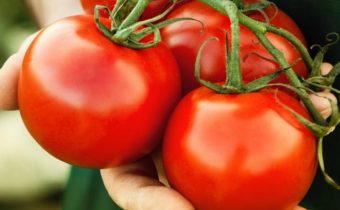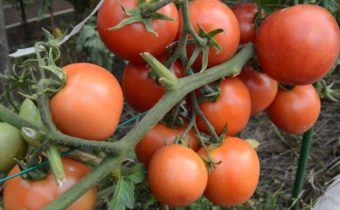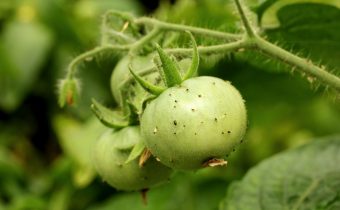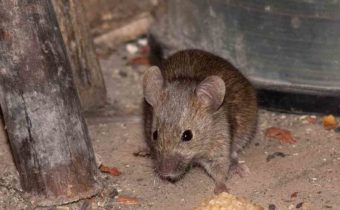We master tomato cutting
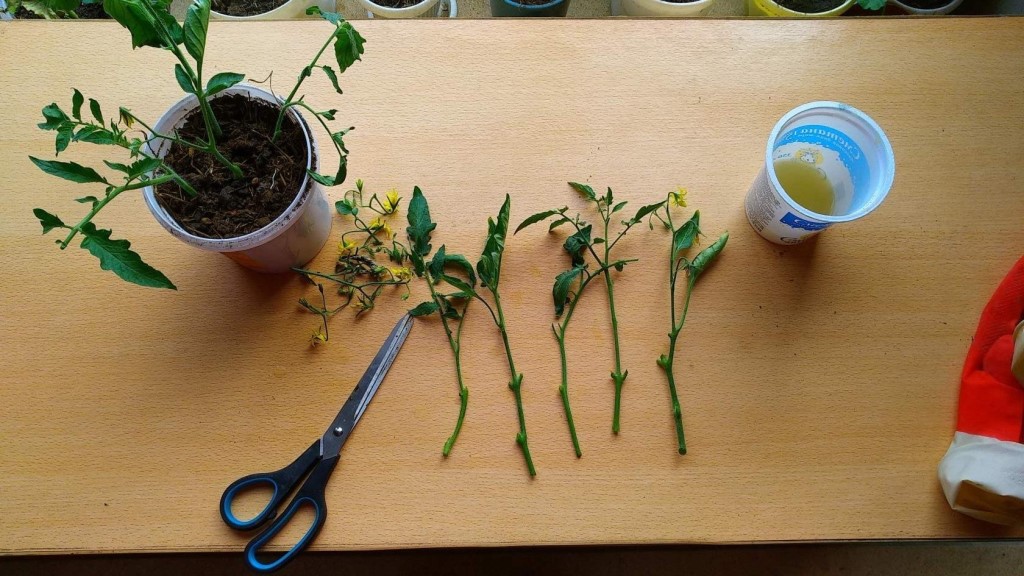
Sliced stepchildren from tomato seedlings in the water quickly take root. If you decide in advance to stock up with tomato stalks of stalks, you should sow the seeds earlier from the usual planting dates. The grafting will help out when the seeds have not grown, and there is little seedling material. During the growing season, tomatoes grow many stepsons, which slow down the development of fruits. Therefore, cutting off shoots increases yields and forms neat bushes.
The advantage of cutting
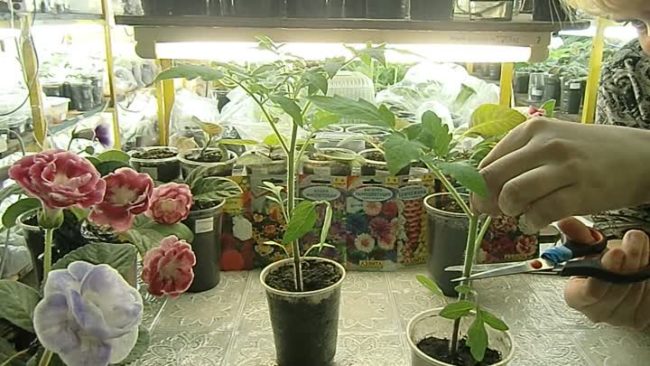 Tomatoes - a perennial plant. If you create a favorable atmosphere for growing seedlings, they will actively develop the entire growing season. It is possible to grow additional saplings when the bush has broken or the seedlings have stretched and overgrown. When forming bushes usually leave 2-3 stalks, the rest of the shoots are cut with scissors. It is better not to throw them away, but to put them in water for germination.
Tomatoes - a perennial plant. If you create a favorable atmosphere for growing seedlings, they will actively develop the entire growing season. It is possible to grow additional saplings when the bush has broken or the seedlings have stretched and overgrown. When forming bushes usually leave 2-3 stalks, the rest of the shoots are cut with scissors. It is better not to throw them away, but to put them in water for germination.
Advantages of the method:
- seedlings do not require a dive;
- seedlings from cuttings are much stronger than from seed;
- seedlings bloom in a month after planting;
- young animals do not need additional coverage;
- rarely get sick;
- fruit faster;
- from 2-3 seeds you can get seedlings on the whole bed;
- preserve the varietal qualities of the mother bush
Plants grown from a stepson do not have a central root, which penetrates deep into the soil to extract moisture. This is compensated by the extensive development of the root system. It is located on the surface of the earth. Therefore, the stalk seedlings need constant watering.
Hybrids do not retain maternal qualities in the seed method, but the original properties remain during grafting.
Propagation of tomatoes by cutting
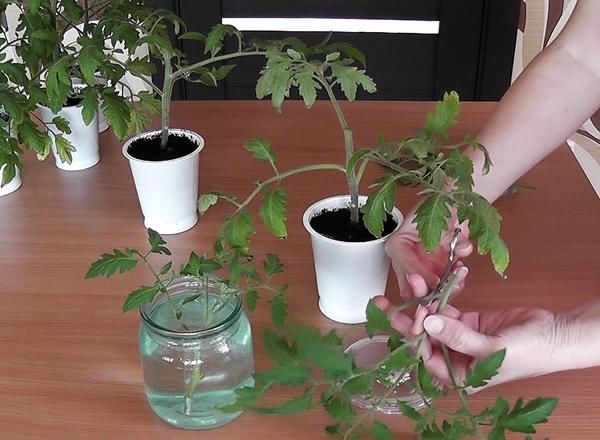 Seeds are soaked for two days in a wet gauze. Germinated material is planted in pots or containers at a distance of 4 cm. When thickened shoots, seedlings are transplanted, leaving 3-4 cm between sprouts. When the seedlings have 6 leaves, scissors cut off the tops, keeping 2 lower leaves. If you take shoots below 4 leaves, then the resulting bushes will bear fruit late. The first brush in cuttings appears lower than that of seedlings.
Seeds are soaked for two days in a wet gauze. Germinated material is planted in pots or containers at a distance of 4 cm. When thickened shoots, seedlings are transplanted, leaving 3-4 cm between sprouts. When the seedlings have 6 leaves, scissors cut off the tops, keeping 2 lower leaves. If you take shoots below 4 leaves, then the resulting bushes will bear fruit late. The first brush in cuttings appears lower than that of seedlings.
Cut petioles put in water with a stimulator for the development of roots. The lower leaves of the cuttings are removed. Approximately in 6-8 days the first roots grow. The speed of their germination depends on the variety of tomatoes.
After this, the processes can be transplanted in containers with the ground, the container is chosen with a volume of at least 10 cm by 10 cm. Provide drainage holes. Make such a deepening in the soil to distribute all the roots. Do not plant seedlings in the cramped fossa. Then pour the soil, watered. The soil is fertile, light, breathable. It is advisable to water the ground with manganese solution for disinfection. If the types are different, then on each cup they stick a paper with the name of the variety.
Cropped maternal bushes in 10 days can be transplanted to the beds. When pruning at the main plant leave 1-2 shoots. They will soon have new stepchildren. The upper part will take root quickly, side shoots will grow.
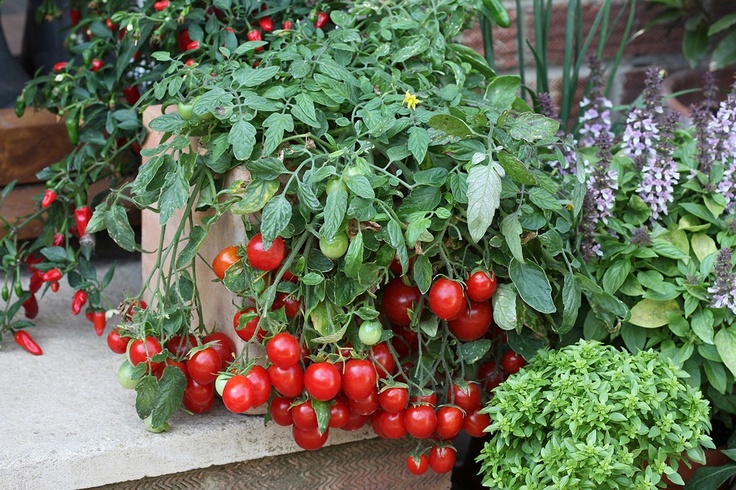
Planted in the ground, surviving stress, after 2 weeks firmly rooted. They will sprout shoots in the axils of the leaves, formed bushes with two trunks.
In the water for germination immerse 7-8 cm of the stem.
Care for cuttings
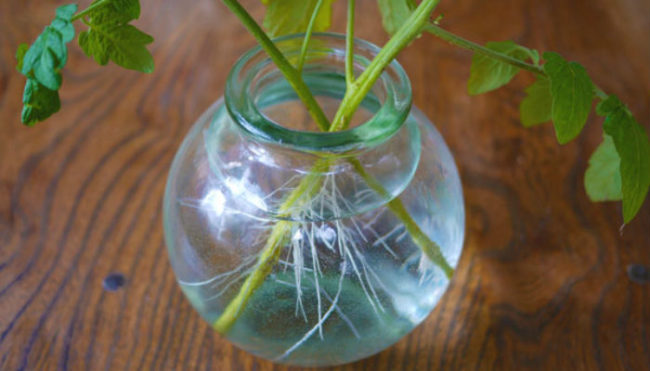 Two weeks after planting, seedlings are transferred to a warm place + 22-24 degrees until they take root. Then the young are moved, where the temperature indicators during the day are 15-18 * C, at night 13-15 * C. Draft in the room should not be. It should be periodically aired.
Two weeks after planting, seedlings are transferred to a warm place + 22-24 degrees until they take root. Then the young are moved, where the temperature indicators during the day are 15-18 * C, at night 13-15 * C. Draft in the room should not be. It should be periodically aired.
Planted cuttings need good lighting. It is necessary for the growth and appearance of new leaves and processes. It is better to place the plants on the southern window-sills. Direct sunlight should not fall on the greens. So that the seedlings are not stretched out on the one hand, they are periodically turned by different sides towards the light.
Tomatoes are watered regularly, but not poured. Too wet soil will cause rotting of the rhizome. The frequency of irrigation 1-2 times a week. They use thawed, rain, defended water, but not chlorinated.
Before transplanting the cuttings in the garden, they are fed twice. You can cook fertilizer at home. The first time they feed 12-14 days after planting: 30 g of superphosphate, 5 g of urea, 15 g of potassium sulfate per bucket of liquid. Fertilizers are applied a second time 14 days after the first feeding. The dose of substances is doubled to 10 liters of water. If the soil was nutritious, then one fertilizer is enough.
Autumn tomato cutting
In the first decade of autumn, the stalks and tops of adult plants are cut up to frosts. Cut 15 cm stepson, it should be 4 sheets, inflorescences are removed. It is better to choose stems thicker. With winter storage, the stalks thin out.
The apartment put the cuttings in a glass container with water. 3-4 stepsons are placed in one container to make them spacious. Banks put on a bright window sill, on each write the name of the hybrid. 6-8 cm of stem are immersed in water.
In two weeks, the roots will appear, they will develop, the stem will lengthen. Such specimens are not planted in the ground. In the middle of November, the upper part is cut off at the top of about 10-15 cm. They change the water in the tank (the jar is thoroughly washed), you can use boiled liquid with added nutrients. Remove the bottom of the seedlings with roots. From November to December, the life processes of the seedlings stop, it rests. It can be rearranged on the shelves. After December 15, the procedure is repeated, cut off the lower part (1 cm) with the roots, change the water. Landing in the ground is made after January 20 in small pots with soil mixture. In February, the grown seedlings are cut into cuttings and put into the water for rooting.
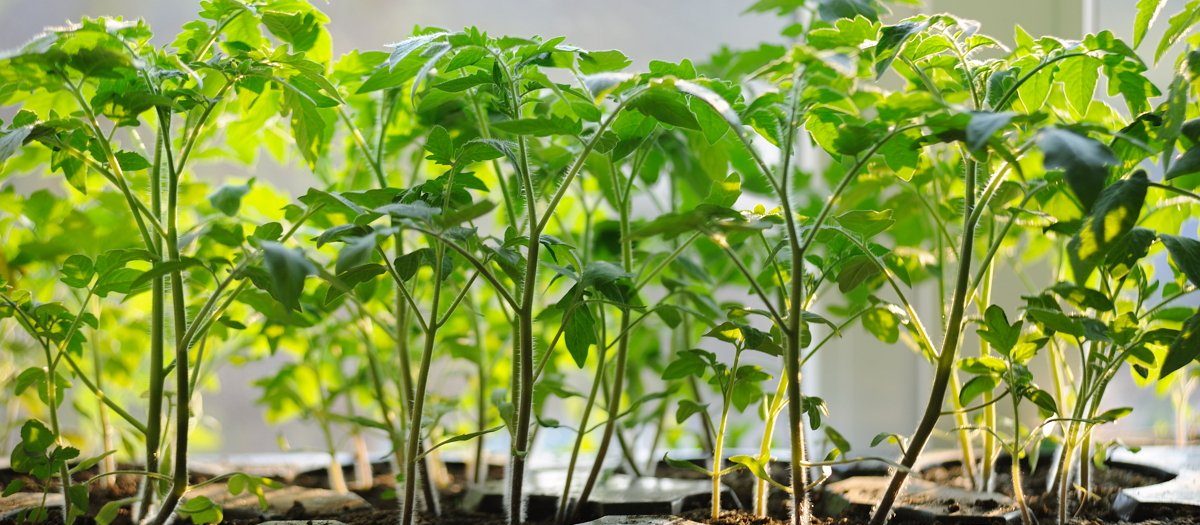
Tomatoes grown on cuttings do not differ from the fruits on the main plant. Each gardener must himself calculate the time of sowing and pruning of seedlings to get the required number of seedlings to be planted. The harvest from the grown stalks is the same as from the mother bushes.


